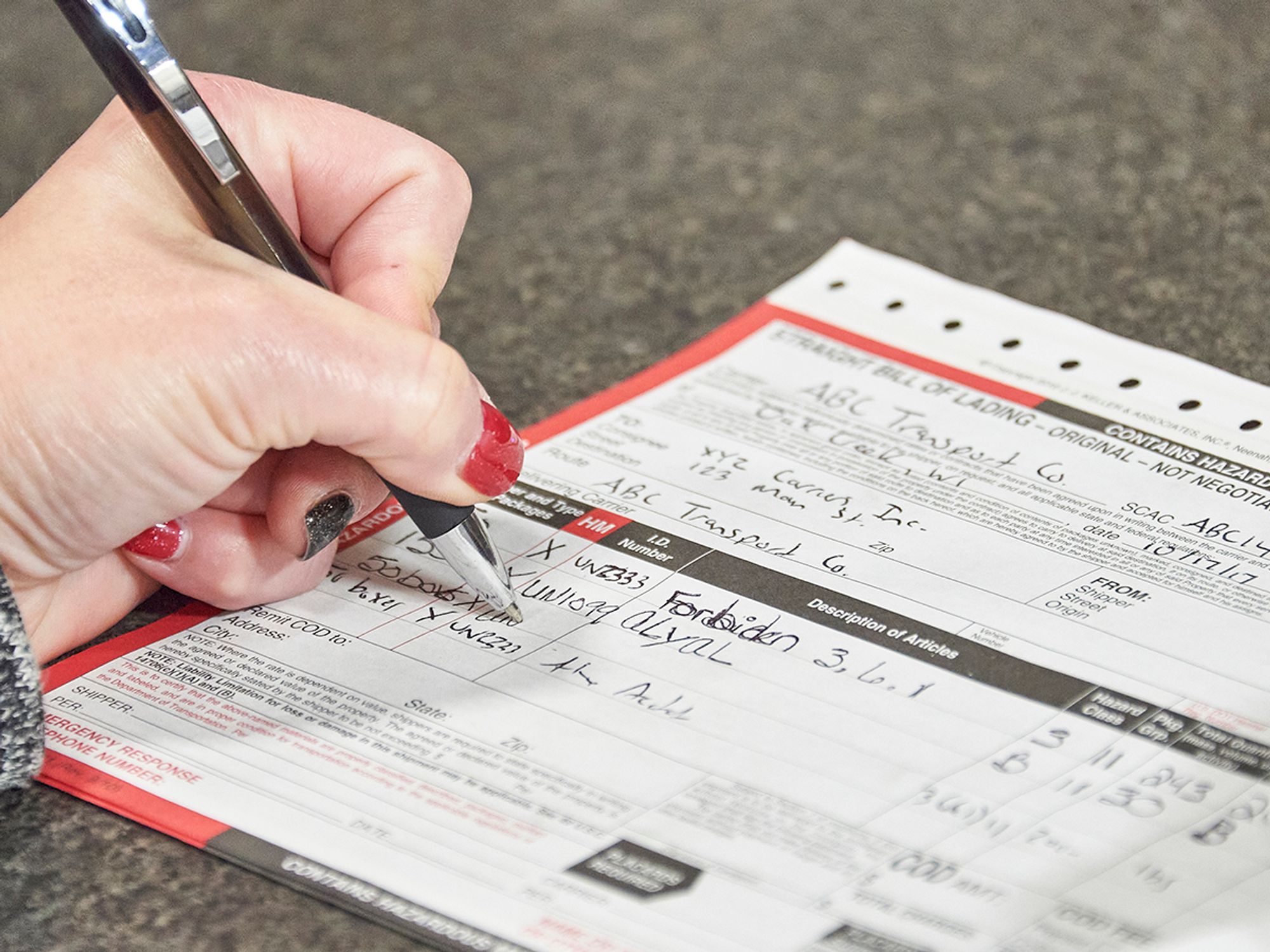Bill of lading information

- The bill of lading must contain basic information about the load and payment.
Address
The street address of the consignee should always be shown. If the destination is a city of considerable size, the consignee’s full address should always be listed in the space provided. The carrier is only responsible for delivering, or sending notice on arrival, to the address shown on the bill of lading. A post office box will not allow prompt delivery.
Destination
The destination should be accurate. An error or an illegibly written or misspelled destination can cause a great deal of trouble and expense. If there are two destinations of the same name in the same state, the consignee should insert the name of the county to indicate the correct destination clearly.
Date
The date on bills of lading should be the exact date of delivery of the merchandise to the carrier. This can help prevent misunderstandings regarding what rate or tariff applies to the shipment.
Description of goods
The description of the goods covered by the bill of lading should be complete and exact regarding quantity and quality. Other information may be necessary to allow the carrier to classify and properly rate the shipment. The law, both federal and state, requires shippers to furnish the correct description of property to be transported by the carrier. The carrier is also required to use proper and reasonable diligence when determining that the correct description of the property has been provided.
If, through error, the shipper describes the shipment incorrectly, and therefore is subject to a higher rate than the shipper would have been responsible for under another description, a corrected bill of lading may be issued. There are heavy penalties for intentionally describing a shipment incorrectly to obtain lower freight rates and charges.
Special markings and instructions
Special marks shown on the shipping units should be reproduced on the bill of lading. Special instructions (i.e., freezables, transit privileges, pick-up allowances, etc.) should be included.
Payment of freight charges
Carriers may require prepayment of freight charges on certain commodities or on freight consigned to certain points, and they have the right under the law to require prepayment on all freight as long as they avoid discrimination. Generally, it is the option of the shipper to determine who will pay the charges and at what point.
Bill of lading forms must indicate the liability for transportation charges. Some forms require the words “to be prepaid” to be inserted. Other forms require that the “collect” box be checked.
Section 7
The box on the face of the bill of lading referring to “Section 7 of conditions,” sometimes known as the “no recourse clause,” deals with the payment of freight charges. It is fully explained in Section 7 of the terms and conditions, but basically provides:
- That the owner of the goods or the consignee must pay the freight charges, and except where the carriers are lawfully authorized to do so, it must not deliver or relinquish possession at destination of the property until all tariffs and charges on it have been paid.
- The consignor shall be liable for the freight and all other lawful charges unless space provided for stipulating otherwise on the face of the bill of lading has been signed.
- The carrier has the right to require prepayment or guarantee of the charges at the time of shipment.
- If inspection reveals the articles shipped are not correctly described in the bill of lading, the freight charges on the goods that were actually shipped must be paid.
Shippers who leave the Section 7 area blank or unsigned are effectively telling the carrier that if they do not, or are unable to, collect the charges from the consignee, the carrier may return to the shipper (consignor) for payment of the freight charges, even though the terms for payment of freight charges on the bill of lading are collected on delivery.
Whether or not Section 7 is executed has a direct impact on the carrier’s ability to collect freight charges from the consignor when the charges are due and uncollectible from the consignee.
